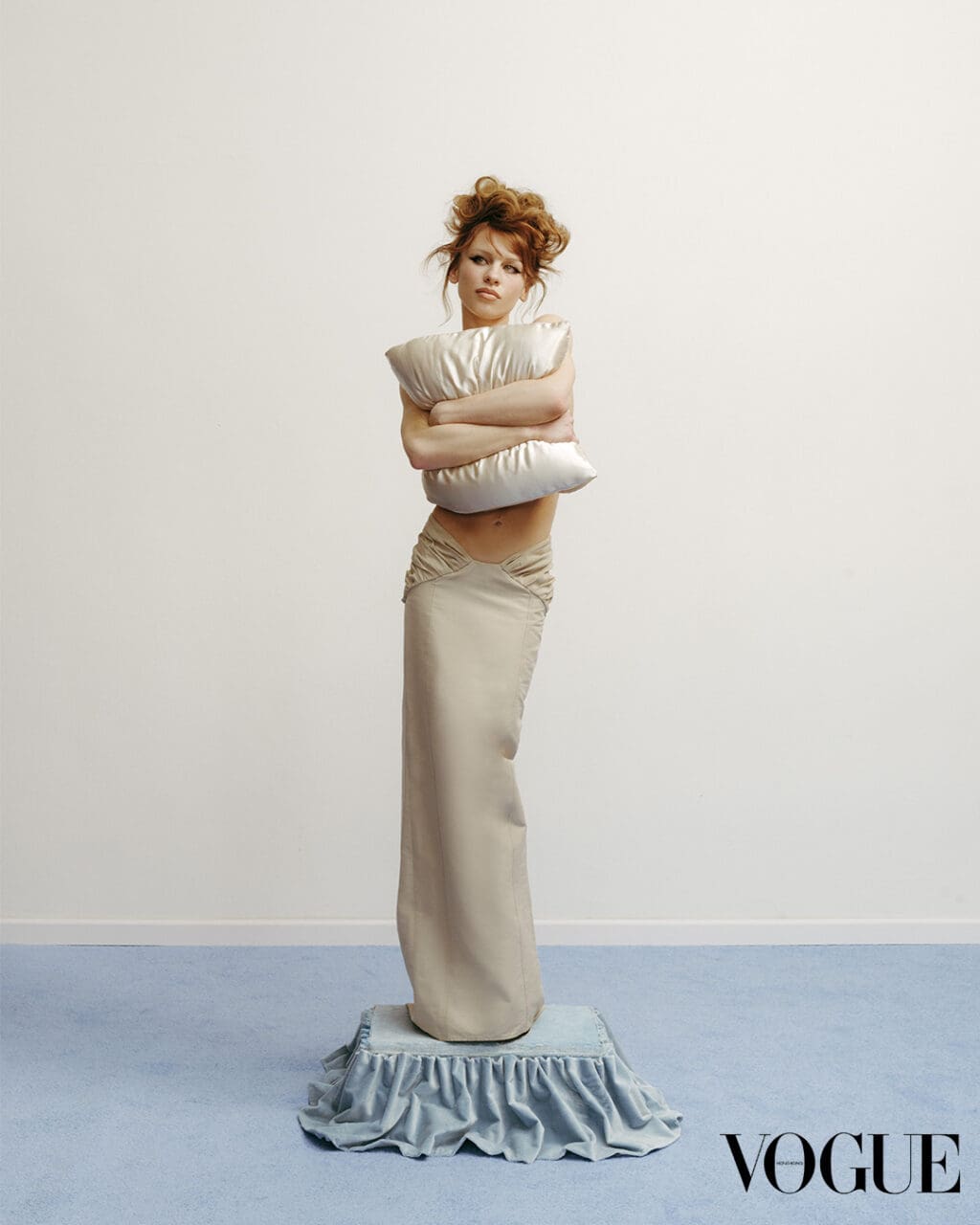Satoshi Kuwata takes a unique approach by not explicitly emphasising sustainability in his work. For him, considering these issues is already inherent in the design process itself. As an emerging figure in the world of design, he opts not to rush into rapid commercial expansion but instead takes the time to realise his own design principles, prioritising a “less quantity, but better quality” approach.
Born in Kyoto, Japan, Kuwata began his design journey at the young age of 21, embarking on a life-changing journey to London to pursue his dreams. Immersed in the vibrant atmosphere of Central Saint Martins, he further honed his skills by apprenticing on Savile Row, mastering the art of meticulous tailoring. After completing his studies, he worked with prominent figures such as Gareth Pugh and Kanye West as well as with renowned brands like Givenchy and Edun. Eventually, he established his own Milan-based label, Setchu, and later won the esteemed LVMH Prize Designer Award in 2023, solidifying his position as a rising star in the fashion industry.
Kuwata is known for his thoughtful design philosophy. The Japanese designer often thinks less about seeking inspiration for his next collection, instead focusing more on creating enduring clothing that people genuinely need. In his latest collection, he has introduced two cutting-edge fabrics that showcase his resource-conscious mindset and his dedication to innovation. One is the “paper denim” made from discarded sugarcane waste and the other is a type of washable wool. These materials not only deliver optimal practicality but also maximise resource conservation.
Sugarcane is a common and often overlooked commodity in daily life. While it can be directly consumed or processed into sugar, dealing with the residue after juice extraction poses a challenge. “Sugarcane is actually among the most productive agricultural crops. After sugar production people attempt to feed cattle with leftover sugar cane, but because we just produce so much sugar, 90% of the sugar cane are thrown away. This not only causes odour issues but also increases the risk of fire,” Kuwata explained. “We found a small company in Japan that can turn the byproducts into paper, spin them into yarn, and blend them with cotton yarn to create denim fabric. It looks identical to traditional Japanese denim but is more than 30% lighter.”
In addition to paper denim, Kuwata’s team has created a machine-washable cashmere fabric. Unlike traditional cashmere items that require delicate hand-washing, this innovative fabric can withstand machine washing. Kuwata explains, “With our machine-washable cashmere, you no longer have to worry about accidentally staining your garment while travelling or attending events. It’s designed to be durable and convenient, ensuring longevity and ease of care.”
The designer firmly believes that regardless of the material or its application, these issues must be contemplated throughout the design process. Neglecting such considerations and carelessly releasing new collections can result in confusion and lack of coherence. He strongly advocates for designers to proceed thoughtfully, creating only what is truly necessary—an approach that embodies true sustainability.
Undoubtedly, material innovation plays a pivotal role in advancing sustainable fashion and Kuwata emphasises that any innovation should prioritise both sustainability and durability. “If someone invented a longer lasting material that is plastic based, that would be very meaningful. We cannot live without plastic, but if we can create long-lasting plastic that reduces overall consumption, that is sustainable. You wouldn’t have to only wear cotton, you wouldn’t have to only wear wool. Ultimately, I believe people should produce less—that’s the key word.” Kuwata’s perspective underscores the significance of rethinking materials and production methods to achieve a more sustainable fashion industry.
“I don’t want to talk too much about sustainability because when I design, it is inherently sustainable because I don’t design for my ego. I design with love, that’s what I do,” he said. He aspires to create not just a fashion brand, but a lifestyle brand where sustainability is a fundamental part of its DNA. “Designing new collections, new fashion shows inspired by something, with lots of images moving about— I don’t believe in this. I believe in the reality of what people need,” he continued. “I’ve travelled to quite a lot of different cities— London, obviously Japan, Paris, New York, and Milan—and throughout those years I really learned that what people from each of these cities want is actually really similar to each other. They want something simple, but with a compelling story.” Guided by his three principles—Artisanal, Playful Functionality, and Timeless—Kuwata strives to uphold these values in his brand, ensuring that his designs resonate with people and stand the test of time.
Kuwata’s concern extends beyond meeting people’s needs; he also cares deeply about who creates the fabrics and products and where they are made. He recognises the value of preserving local craftsmanship and artisans, which is often achieved through the use of hand-sewing techniques. “I want to protect these [traditions] too because I don’t want our children and grandchildren to miss out on these products in 20 or 30 years. They are products we create—a human-made beauty, an art piece,” Kuwata passionately expressed.
Working with local suppliers and factories is another vital aspect of the designer’s sustainable approach. Not only does it foster the growth of local industries and cultivates enduring relationships between the parties involved, it also enables factories to dedicate resources to training aspiring artisans. Kuwata prioritises the preservation of these invaluable crafts, and ensures their continuity for generations to come.
Translated by Hala Kassem
Editor
Junjie WangCredit
Photo courtesy of Patrick Bienert, Stefano Galuzzi and Shota Kono








